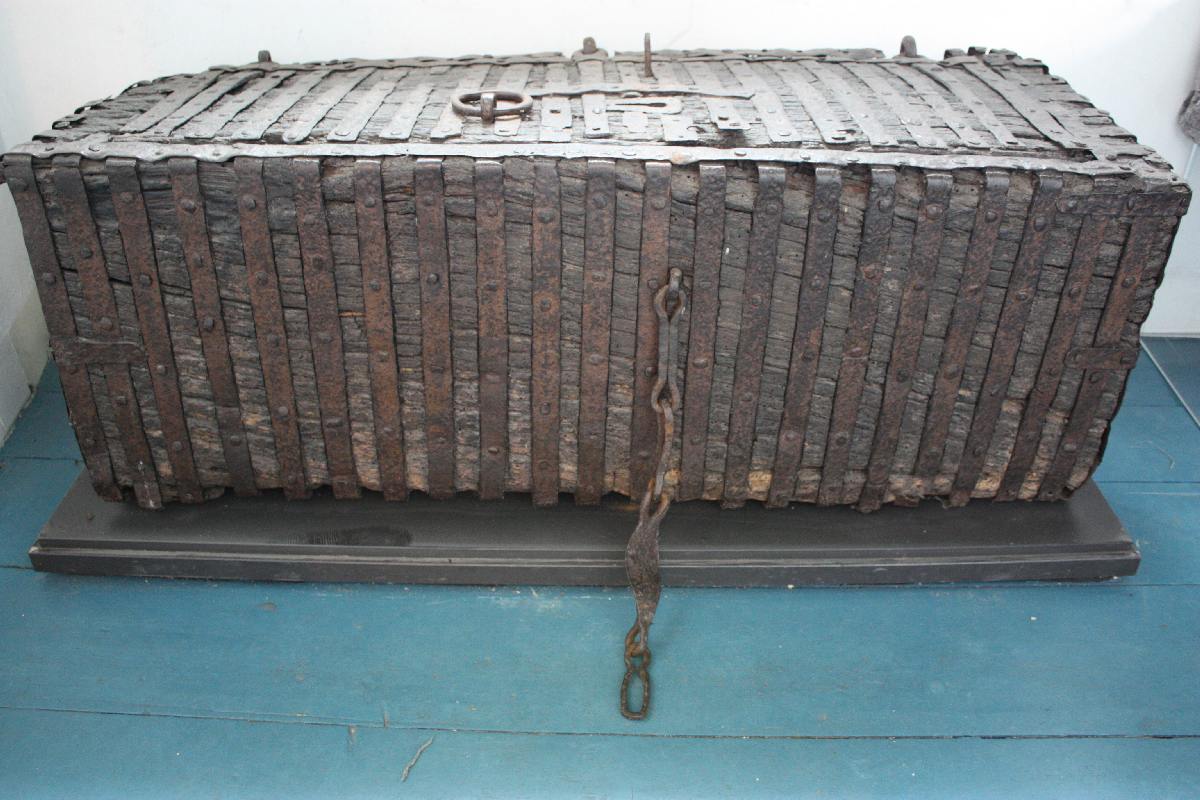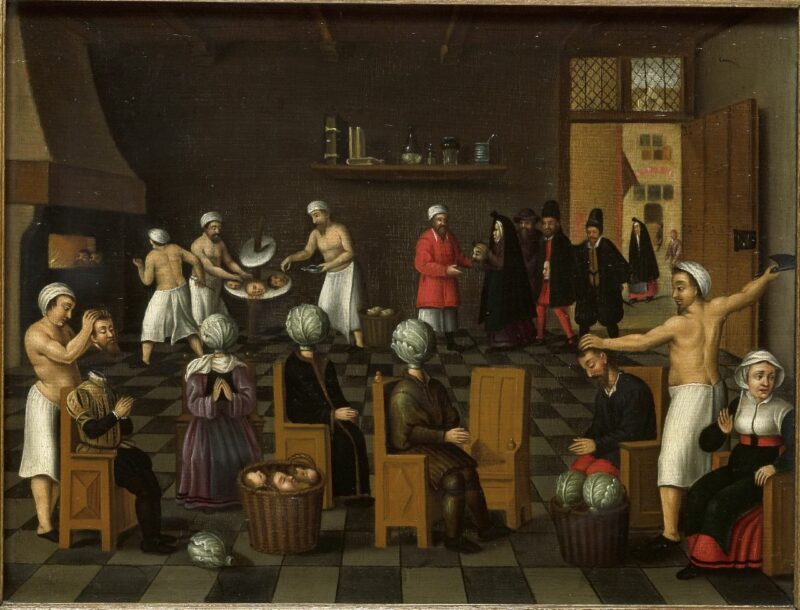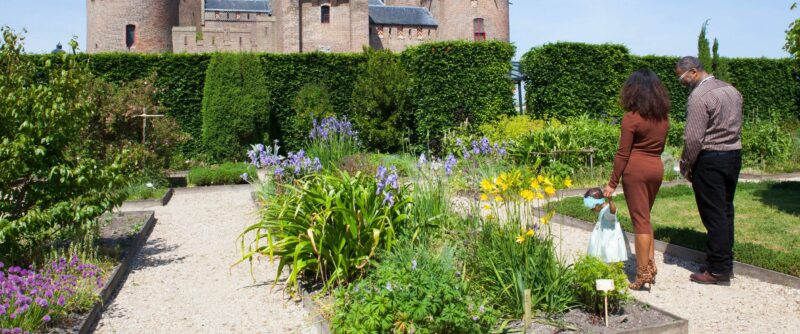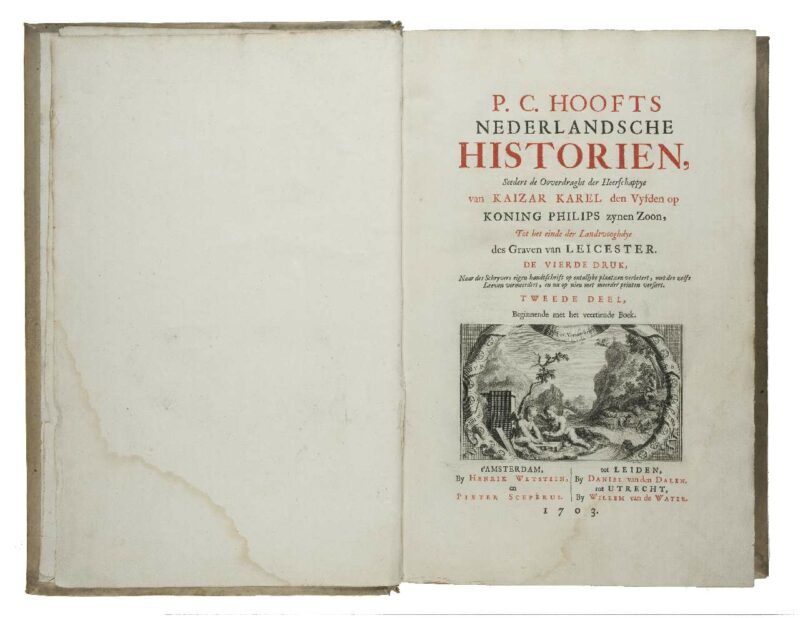Medieval chest
Chest without feet, 14th century, oak and iron,
62 x 148 x 64 cm. Collection of Rijksmuseum Muiderslot,
Muiden, M1953-150.
Talking about chests
This 14th-century chest is the oldest piece of furniture in the Muiderslot collection. Medieval ladies and gentlemen lived out of their chests. The nobility, such as the counts and countesses of Holland, were always on the road between their castles. It was important for them to be seen in their estates on a regular basis. It showed that they were well and in charge. The count’s court was traveling constantly, taking most of its members’ possessions along. With costly wall hangings, chairs and beds that could be taken apart, and even portable altars, every castle could be decorated with the wealth and affluence a count was expected to display. And all of it was transported in chests, so these were much more common in the Middle Ages than cupboards. This 14th-century chest is all the more special for having been carved from a single piece of wood rather than being made from planks. A hollowed-out oak is decorated with iron, a chest-making method still recognizable in the English word for chest: a trunk, used not just for a chest but also for part of a tree.
 EN
EN NL
NL DE
DE![Muiderslot [EN]](https://muiderslot.nl/en/wp-content/uploads/sites/2/2021/07/muiderslot-rood.png)
![Muiderslot [EN]](https://muiderslot.nl/en/wp-content/uploads/sites/2/2021/07/Logo_Vierkant_Muiderslot_Rood.png)




